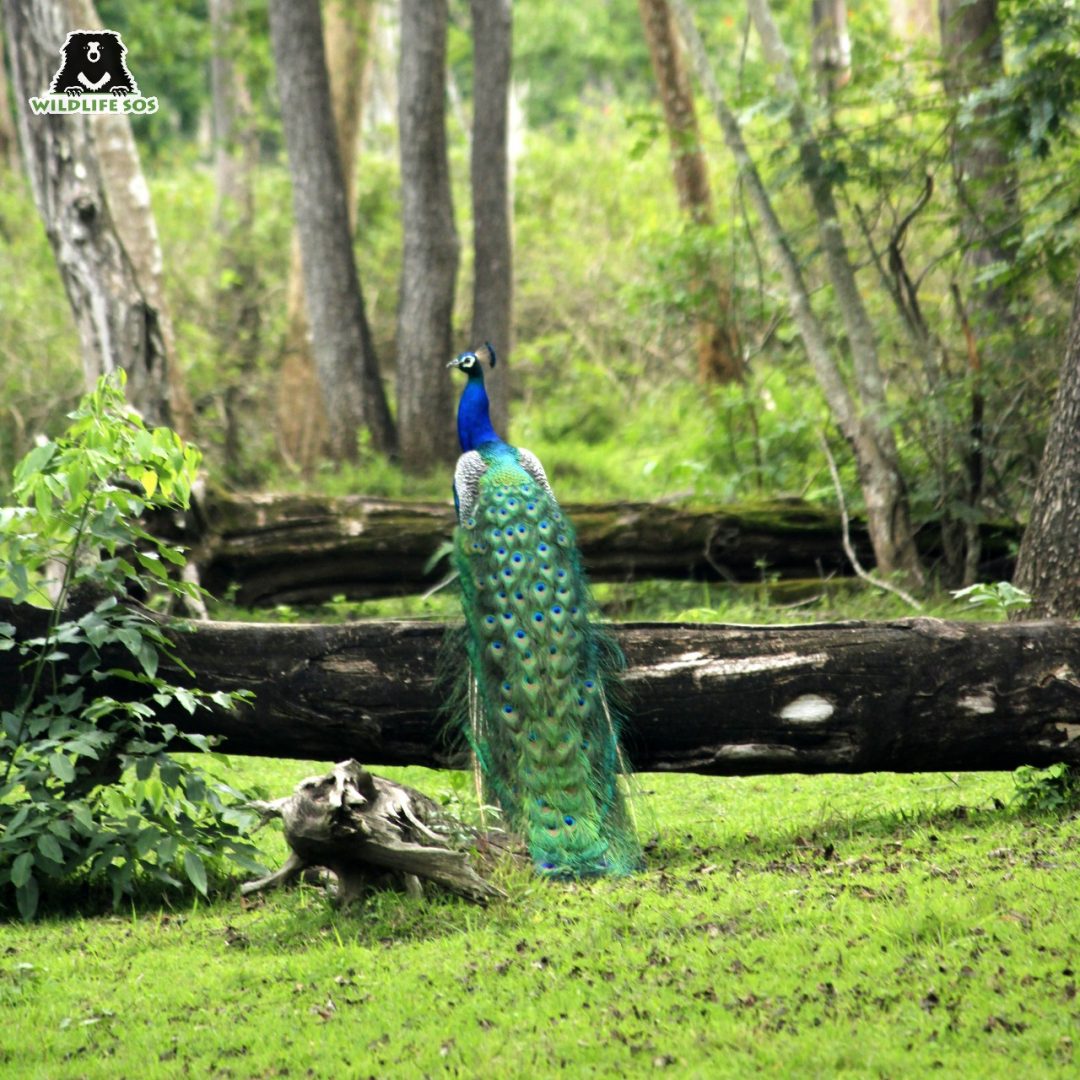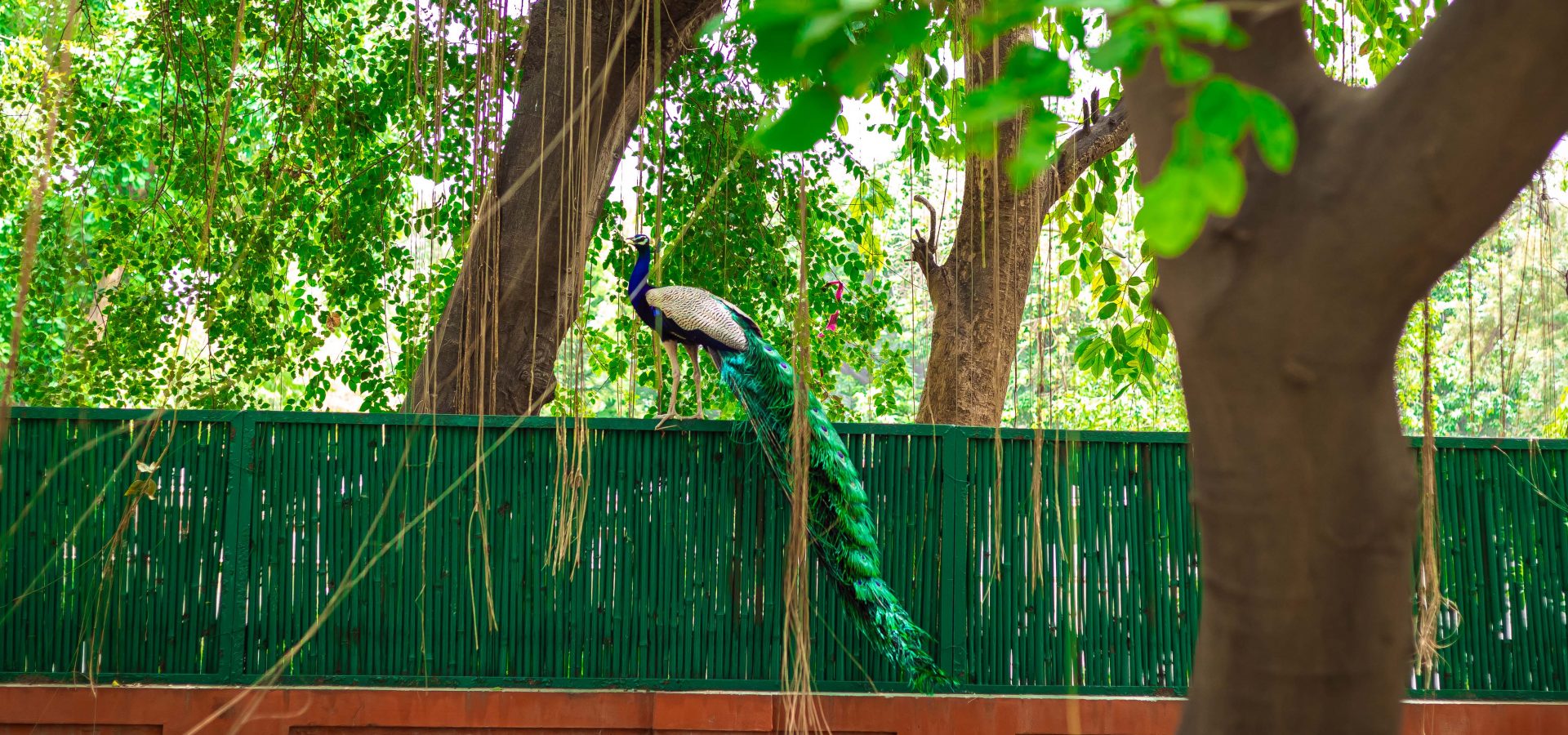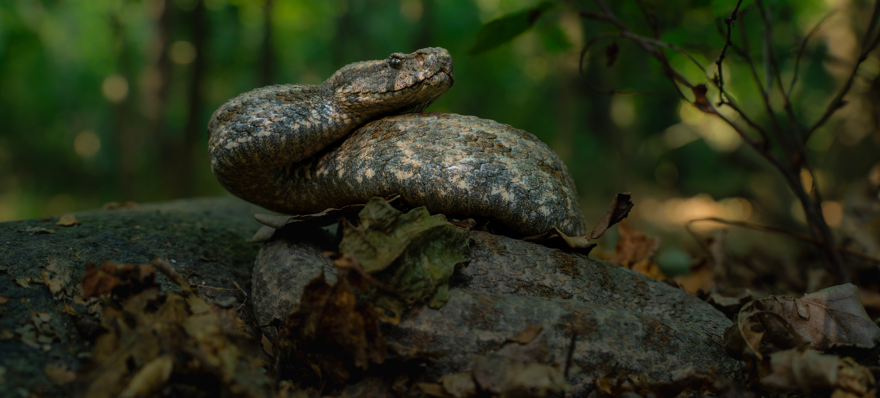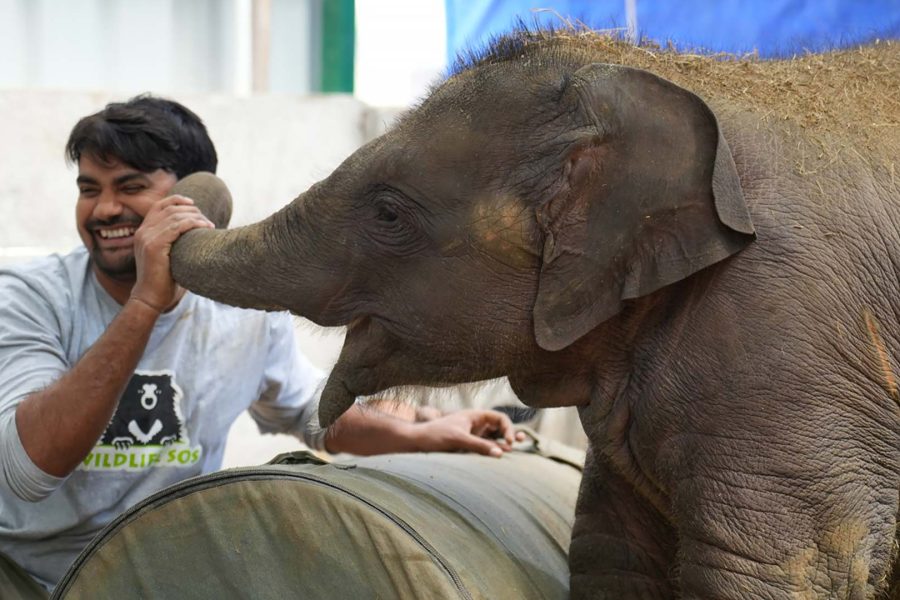The Indian Peafowl (Pavo cristatus) is hailed as the National bird of India. Although this bird is commonly called a peacock, technically, only the male bird is a peacock. The females are referred to as peahens. Both sexes are together known as peafowl.
The male peafowl wears the hues of blue, green and golden yellow with royal pride, and is a delight to watch. Peacocks have a resplendent trail which has a design of multiple eyespots. When the bird opens out its tail feathers, the sight sure is one to behold! The male peafowl has been a recurring figure in Indian mythology and folklore, and a muse to artists and writers across several cultures throughout history.
The large pheasant can grow up to two metres in length and six kilograms in weight. As omnivores, peafowl feed on plants, seeds, invertebrates, reptiles, and even amphibians.

However, there’s much more to this spectacular species than meets the eye!
Habitat and Distribution
Indian Peafowl are distributed across the Indian mainland, right from Jammu and Kashmir in the north, to the peninsular region in the south. They also inhabit the neighbouring country of Sri Lanka. Although they majorly prefer scrub, semi-arid, and dry deciduous habitats, they can be found in a variety of other regions. Agricultural lands are also known to be suitable breeding grounds for the bird due to the presence of seeds and saplings. While the bird generally forages and builds its nest on the ground, it prefers to roost on tall trees like Eucalyptus, Amaltas, Peepal, Mango, and Banyan trees.
Due to their extraordinary features, peafowl have been introduced in the United States, West Indies, South Africa, New Zealand, Australia, and countries in Europe. From the Indian mainland, the bird has also been introduced to the Andaman Islands.
Mating Strategy
As is commonly known, male and female peafowl do not share the same appearance. Females have muted coloured feathers, which helps them camouflage and nest without the fear of predators. Males have a turquoise blue upper body with greenish-blue tail feathers. They open out their tails to showcase the eyespots on them, and perform a ‘dance’ to woo a potential mate. Male peafowl congregate (leks) in open landscapes to exhibit their dramatic displays. After each mating season, males shed their tail coverts, only to grow new ones before the next one.
The breeding season of peafowl falls between March and September. Males are known to be polygamous; they mate with numerous females during the mating season. Post successful breeding, only females incubate the eggs and raise the young ones. They dig their nests in the ground and cover them using dried and decaying plant materials.
Let’s Bust Some Myths!
- Peacock has a thousand eyes.
Each peafowl has only two eyes. However, tail feathers of a male peafowl have round spots that resemble eyes. These eyespots form a delightful pattern across its train, which the male flaunts to attract females.
- Peafowl tail feathers at home keep lizards away.
While peafowl are known to prey on lizards and other reptiles, their feathers do not repel them. Their presence may scare lizards away, but does not guarantee their permanent dismissal.
- Female peafowl can get pregnant by sipping the tears of the male.
Like other birds and animals, peafowl too follow the natural process of mating to procreate. Why would males make the effort to display their extravagant tail feathers otherwise?
- Peafowl can only be spotted during or right after rainfall.
Since the breeding period of peafowl coincides with the monsoon season, some believe that they only come out when it rains.
- Their body parts have medicinal properties.
The bird is killed in large numbers across the country due to an ingrained belief that its meat and oil has medicinal use.
- Peafowl cannot fly.
Although they are large birds, peafowl are capable of flight. They fly to reach high branches of tall trees to roost!
Threats Faced
Although listed as ‘Least Concern’ in the International Union for the Conservation of Nature (IUCN) Red Data List, the species is facing severe threats throughout its native range. Habitat loss and fragmentation are some of the critical threats, which expose them to conflict situations. This includes encounters with stray dogs, which might prey on them. Rampant use of insecticides also threatens the peafowl since they feed on plants and seeds.
Due to the protection peafowls receive under Schedule I of the Wildlife (Protection) Act, 1972, any crimes can lead to imprisonment, a hefty fine, or both. Despite this, the bird is illegally poached. Males are generally captured from the wild for their attractive feathers, thereby affecting their population. Certain tribes use body parts of peafowl to consume as food. Peafowl ashes are used as medicines that are assumed to cure asthma. Ashes of their feathers are also believed to cure hiccups, sickness, and vomiting. Peafowl heads are even used as charms, while their meat is believed to have aphrodisiac properties.
Peafowl Rescues by Wildlife SOS
Team Wildlife SOS is actively involved in rescuing wild animals from all around the country. On several occasions, our Rapid Response Unit has rescued Indian Peafowl from distressed situations. Since the month of May, the rescuers have safely extricated over 49 peafowl in Agra alone!
Recently, an injured male peafowl was found in the residence of the former Deputy Prime Minister of India in Delhi. Due to a wing injury, the bird was struggling to move when the Wildlife SOS team rescued it. Our veterinary team provided the bird with intensive medical treatment and care, until it recovered.
In Maharashtra last year, a weak and emaciated male peafowl was spotted by villagers near a sugarcane field. It was found to have an ear infection. Surgical procedures along with necessary medications by Wildlife SOS helped the peacock recover. Soon, he was released back into the wild.
This June, the locals in Agra were astonished to find a stranded peafowl inside an open well. The Rapid Response Team members immediately reached the location to extricate the bird from the 50-feet-deep borewell. After an on-site medical assessment, the bird was released back in the wild after being declared fit.
Open wells continue to pose a risk to peafowl and other animals. Thus, keeping the rising instances in mind, Wildlife SOS is pioneering a monumental effort to cover open wells in Maharashtra. We have partnered with the local communities to reduce the risk of death for both people as well as wildlife. You can make a difference by signing our petition against open wells. If you wish to contribute towards this cause, please click here.





